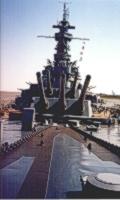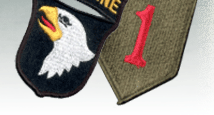The plan
 In
1942 fivethousand canadians landed at Dieppe in an attempt to capture
the harbour. The attack ended in a bloody desaster. The supporting tanks
got stuck on the beach and where unable to bypass the wall that was standing
at the end of the beach. The tanks where sitting ducks for the German
artillery. The canadians, supported by elements of the British marines
and American Rangers of the 1st Battalion met heavy resistance. Only small
elements where able to get off the beach. The absense of tank support
once the men where of the beach wasn't the only problem. Communications
with fighter aircraft flying over the beaches wasn't available and supporting
fire from the fleat was much to light to make a difference against the
heavy fortifications on the cliffs overlooking the beaches. The landing
hadn't been proceeded by an air-stike by heavy bombers because Bomber
Command held the opinion that it's day and night-attacks on Germany where
so effective that it would eventually lead to the surrender of Germany.
So it couldn't take bombers away from their attack on Germany to assist
in other missions. This attitude of Bomber Command would later lead to
conflicts between Eisenhowers staff and that of Bomber Command. In the
Dieppe raid it ment that the soldiers that came out of the landing boats
did not have any place to take cover and they had to make their way through
a wood of obstacles. This demanded heavy casualties on the beach itself. In
1942 fivethousand canadians landed at Dieppe in an attempt to capture
the harbour. The attack ended in a bloody desaster. The supporting tanks
got stuck on the beach and where unable to bypass the wall that was standing
at the end of the beach. The tanks where sitting ducks for the German
artillery. The canadians, supported by elements of the British marines
and American Rangers of the 1st Battalion met heavy resistance. Only small
elements where able to get off the beach. The absense of tank support
once the men where of the beach wasn't the only problem. Communications
with fighter aircraft flying over the beaches wasn't available and supporting
fire from the fleat was much to light to make a difference against the
heavy fortifications on the cliffs overlooking the beaches. The landing
hadn't been proceeded by an air-stike by heavy bombers because Bomber
Command held the opinion that it's day and night-attacks on Germany where
so effective that it would eventually lead to the surrender of Germany.
So it couldn't take bombers away from their attack on Germany to assist
in other missions. This attitude of Bomber Command would later lead to
conflicts between Eisenhowers staff and that of Bomber Command. In the
Dieppe raid it ment that the soldiers that came out of the landing boats
did not have any place to take cover and they had to make their way through
a wood of obstacles. This demanded heavy casualties on the beach itself.
The allies lost
3500 men in the operation. 2469 men where injured and 900 killed.
The Allied headquarters
learned from the raid on Dieppe that a direct attack on one of the harbours
near the path of Calais would cost a very high toll while the chances
of penetrating the defenses there where they where at their best where
discutable.
COSSAC had made
a plan to land in Normandy. This because a landing further north than
the path of Calais would mean that it had to be done out of range of the
fighterplanes at that time. Normandy and Brittany where in range of the
fighter planes. Brittany was also discarded as an option because it could
easily be locked off from the rest of France, which ment that it would
be harder to break out of the beachhead.
The COSSAC plan
for the invasion was an amphibious landing with three divisions on a narrow
front. This area was what later would be known as Omaha Beach, Gold Beach
and Juno Beach.
Montgomery changed
this plan.
- He widened the landingarea, five divisions had to land from the
sea on the first day. This drew Utah Beach and Sword beach in the
plan.
- The Americans and the British both needed their own sector, to avoid
arguments and confusion between the different armies. This also ment
that both sectors needed their own harbor after the initial landings.
- The amphibious landings had to be preceeded by airborne landings.
Two divisions would land in the American sector and one in the British
sector. This made a total of eight divisions (the airborne divisions
where smaller that the regular divisions) Tank support came from 14
tank regiments. British and French commando's and American ranger
got special assignments for the invasion.
- In order to avoid enemy airstrikes on the slow troop transport aircrafts
and ships, the Allied armies needed to have control over the airspace
in Normandy
To give you
an indication of the material that was needed for the invasion: On the
first day the troops would need 900 tanks and armoured cars and 600 heavy
guns. The three airborne div isions
needed 867 gliders. the aircafts that woud drop the paratroopers and would
tow the gliders would fly a number of sorties althrough the night and
the following day. isions
needed 867 gliders. the aircafts that woud drop the paratroopers and would
tow the gliders would fly a number of sorties althrough the night and
the following day.
Southern England was
turning into one big storage in the months prior to the invasion. The
air offensive that was needed to concer the air supremancy over Normandy
demanded 163 new airbases in Southern England. 12400 hospital beds and
50.000 vehicles where ready and waiting. 300 kilometres extra rails where
build to facilitate the transport of supplies.
The amphibious
fleet that would assamble on d-day consisted of 5000 ships and 4000 smaller
connecting boats. The fleet that would accompany and protect the landingships
counted a total of 900 battle ships, cruisers, torpedo boats etc.
The
order of battle
<< BACK
FORWARD >>
|

 In
1942 fivethousand canadians landed at Dieppe in an attempt to capture
the harbour. The attack ended in a bloody desaster. The supporting tanks
got stuck on the beach and where unable to bypass the wall that was standing
at the end of the beach. The tanks where sitting ducks for the German
artillery. The canadians, supported by elements of the British marines
and American Rangers of the 1st Battalion met heavy resistance. Only small
elements where able to get off the beach. The absense of tank support
once the men where of the beach wasn't the only problem. Communications
with fighter aircraft flying over the beaches wasn't available and supporting
fire from the fleat was much to light to make a difference against the
heavy fortifications on the cliffs overlooking the beaches. The landing
hadn't been proceeded by an air-stike by heavy bombers because Bomber
Command held the opinion that it's day and night-attacks on Germany where
so effective that it would eventually lead to the surrender of Germany.
So it couldn't take bombers away from their attack on Germany to assist
in other missions. This attitude of Bomber Command would later lead to
conflicts between Eisenhowers staff and that of Bomber Command. In the
Dieppe raid it ment that the soldiers that came out of the landing boats
did not have any place to take cover and they had to make their way through
a wood of obstacles. This demanded heavy casualties on the beach itself.
In
1942 fivethousand canadians landed at Dieppe in an attempt to capture
the harbour. The attack ended in a bloody desaster. The supporting tanks
got stuck on the beach and where unable to bypass the wall that was standing
at the end of the beach. The tanks where sitting ducks for the German
artillery. The canadians, supported by elements of the British marines
and American Rangers of the 1st Battalion met heavy resistance. Only small
elements where able to get off the beach. The absense of tank support
once the men where of the beach wasn't the only problem. Communications
with fighter aircraft flying over the beaches wasn't available and supporting
fire from the fleat was much to light to make a difference against the
heavy fortifications on the cliffs overlooking the beaches. The landing
hadn't been proceeded by an air-stike by heavy bombers because Bomber
Command held the opinion that it's day and night-attacks on Germany where
so effective that it would eventually lead to the surrender of Germany.
So it couldn't take bombers away from their attack on Germany to assist
in other missions. This attitude of Bomber Command would later lead to
conflicts between Eisenhowers staff and that of Bomber Command. In the
Dieppe raid it ment that the soldiers that came out of the landing boats
did not have any place to take cover and they had to make their way through
a wood of obstacles. This demanded heavy casualties on the beach itself. isions
needed 867 gliders. the aircafts that woud drop the paratroopers and would
tow the gliders would fly a number of sorties althrough the night and
the following day.
isions
needed 867 gliders. the aircafts that woud drop the paratroopers and would
tow the gliders would fly a number of sorties althrough the night and
the following day.